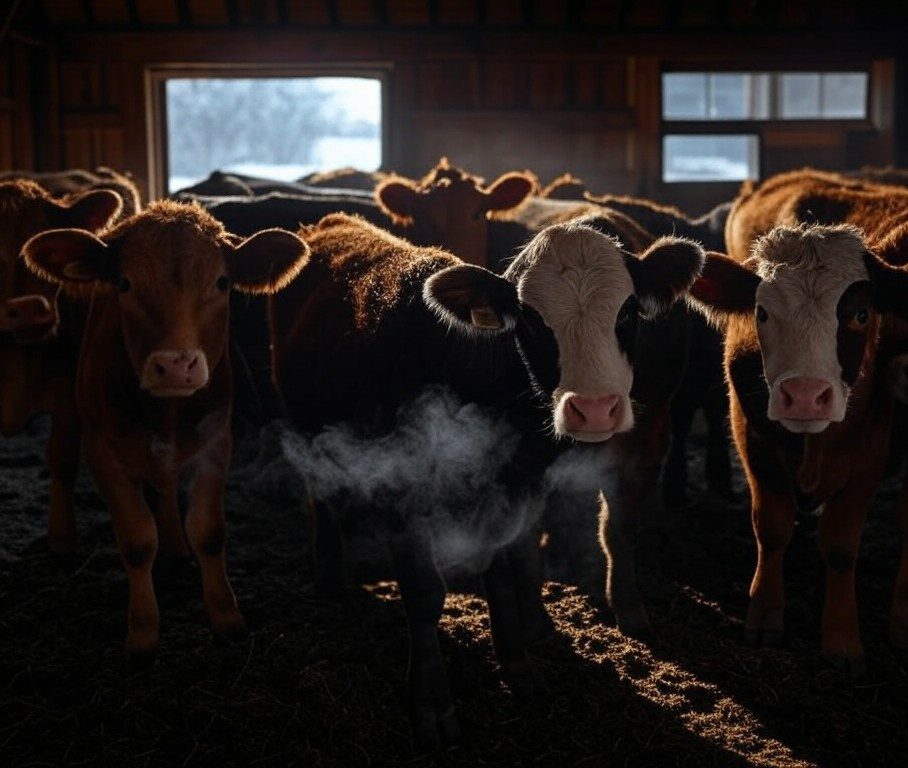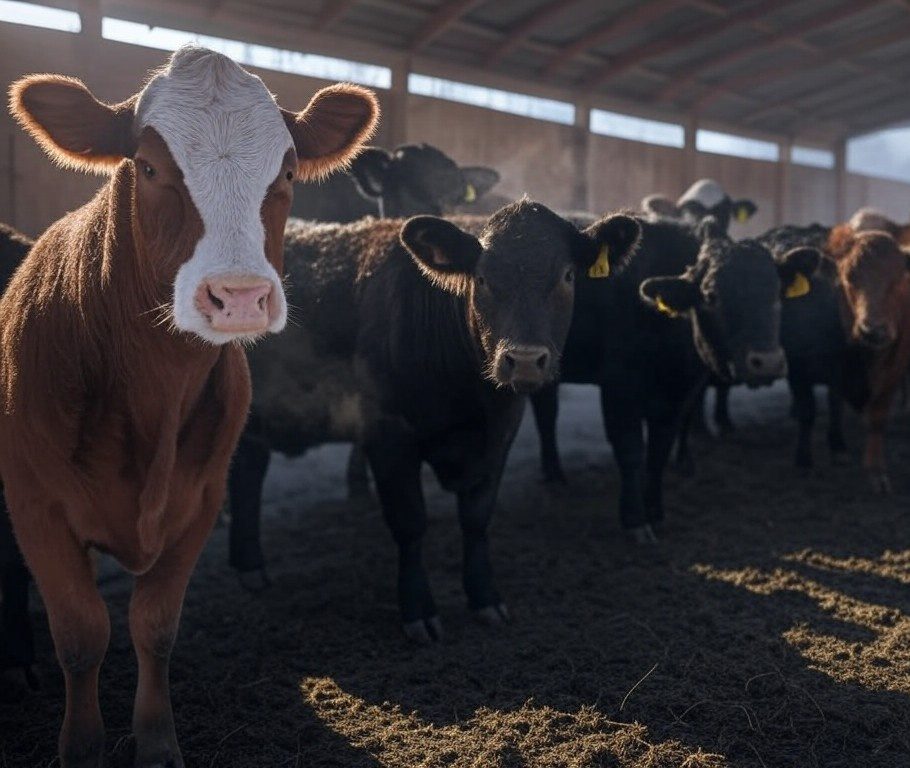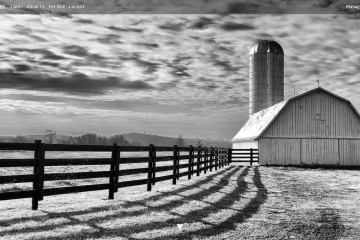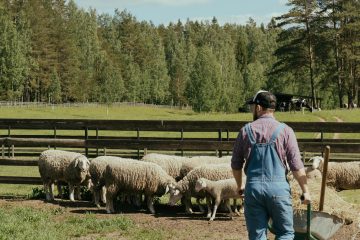Introduction
Most experienced cattle farmers are aware of the hazards of improper ventilation in shelters and barns, so this is directed towards new and inexperienced cattle owners. The winter season creates unique challenges for livestock management, particularly when it comes to maintaining the health and comfort of cattle in barns. One critical aspect often overlooked or misunderstood is the necessity of proper ventilation. While the good intention might be to seal barns tightly against the cold, this could do more harm than good. Let’s discuss why ventilation is crucial for cattle in winter and how to achieve it effectively.
Winter Ventilation Importance
The reason why ventilation is so important is because it controls moisture, reduces ammonia accumulation, improves air quality, and regulates the barn temperature. Let’s look at each of these in more detail. Just remember the acronym “MAAT.”
Moisture Control – Cattle exhale a lot of moisture into the air, especially confined in a barn. Taking that with the moisture from manure and urine, this can lead to high humidity levels, which creates excessive moisture in the barn, on the surfaces, and walls. This can lead to a favorable environment for bacteria and mold growth, which can quickly lead to pneumonia and other respiratory issues in cattle.
Ammonia Control – Another potential issue to be concerned about is ammonia levels. Ammonia is a gas that comes from the waste of cattle. As the ammonia levels increase, it can lead to respiratory, eye, and skin issues. The stress from this can weaken the immune system of cattle, making them more susceptible to illness.
Air Quality – Proper ventilation is crucial to produce fresh air movement , as opposed to stagnant air that is trapping the harmful gases in the confined area. Good air movement ensures removal of carbon dioxide and plentiful oxygen, which can help lessen the chances of illness. Just beware of directs drafts on the animals.
Temperature – It may seem counterintuitive, but ventilation actually helps with the barn temperature. By having good ventilation, it helps to create a consistent barn temperature by preventing a buildup of warm, moist air which can lead to both condensation and overheating when cattle are closely packed. This balance of warmth without excessive humidity is key to cattle welfare.
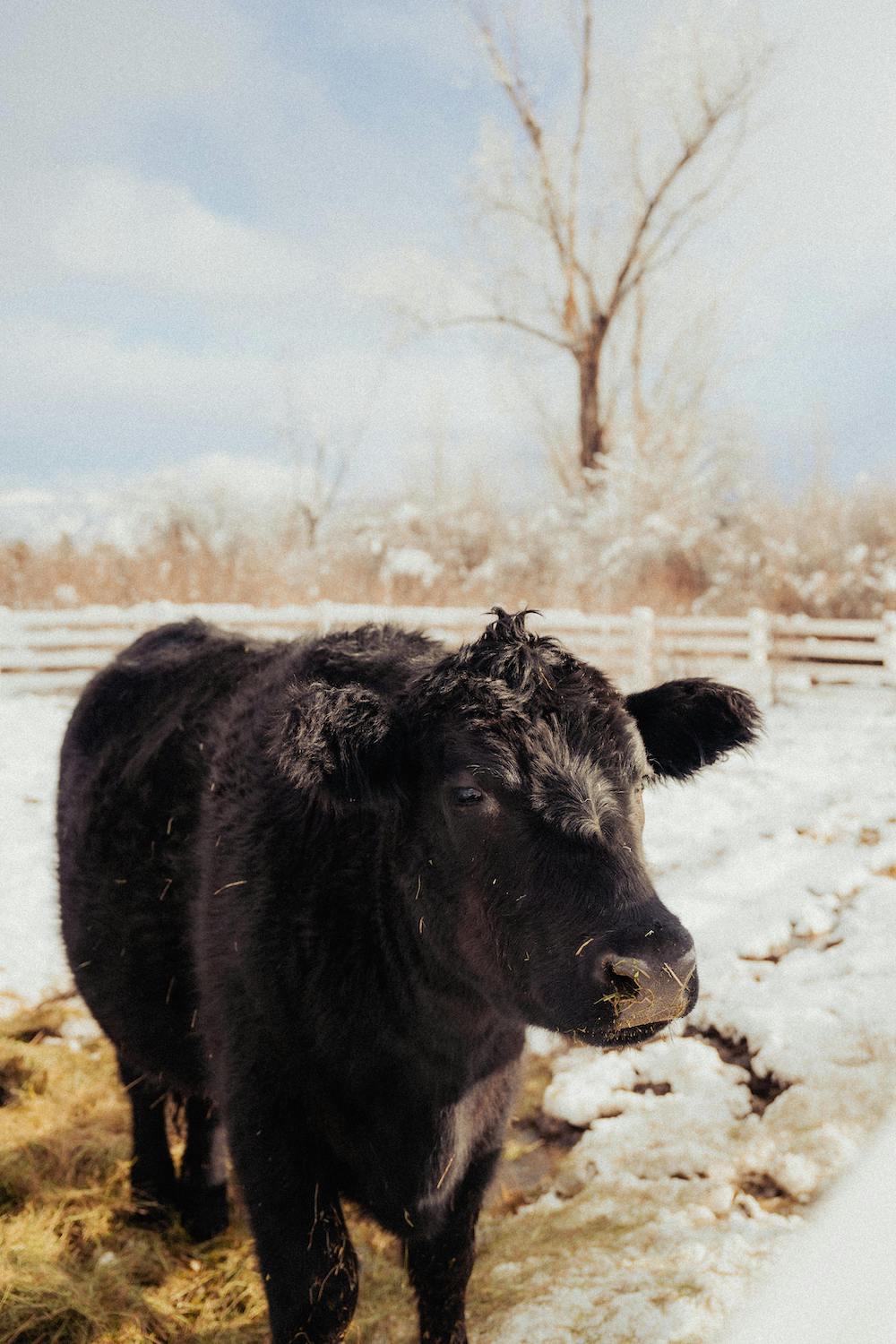
Strategies for Effective Winter Ventilation
Here’s what you can do to keep you animals comfortable:
Natural Ventilation – For smaller barns or regions with milder winters, natural ventilation can suffice. This includes using ridge vents, eave vents, and adjustable side curtains or windows. The key is to manage these openings to allow air exchange without creating direct drafts on the cattle.
Mechanical Ventilation – In colder climates or larger setups, mechanical systems like fans might be necessary. Systems like positive pressure tube ventilation can distribute fresh air evenly. Mechanical ventilation needs careful management to avoid creating cold drafts.
Chimney Effect – By allowing warm, moist air to rise and exit through upper vents, cooler, drier air is drawn in from lower levels. This can be facilitated by having openings at the top of the barn structure.
Wind Direction – Understanding local wind patterns can help in designing or adjusting ventilation to ensure effective air movement through the barn.
Insulation and Bedding – Ensuring good insulation and dry bedding supports ventilation by keeping the barn warmer and drier, which will help air movement.
Avoid Drafts – Ventilation should promote air movement without direct cold exposure to cattle. Drafts can lead to cold stress, especially when cattle are lying down.
Regular Monitoring – Adjust ventilation based on changing conditions like weather, cattle density, and health status.
Education and Awareness – Farmers and barn managers should be educated on the signs of poor ventilation (like condensation, high ammonia smell) and how to respond.
Conclusion
By following these practices , you can lessen the chances of cattle succumbing to an illness and keep them comfortable under cold climate conditions.-The LivestockCity Team
